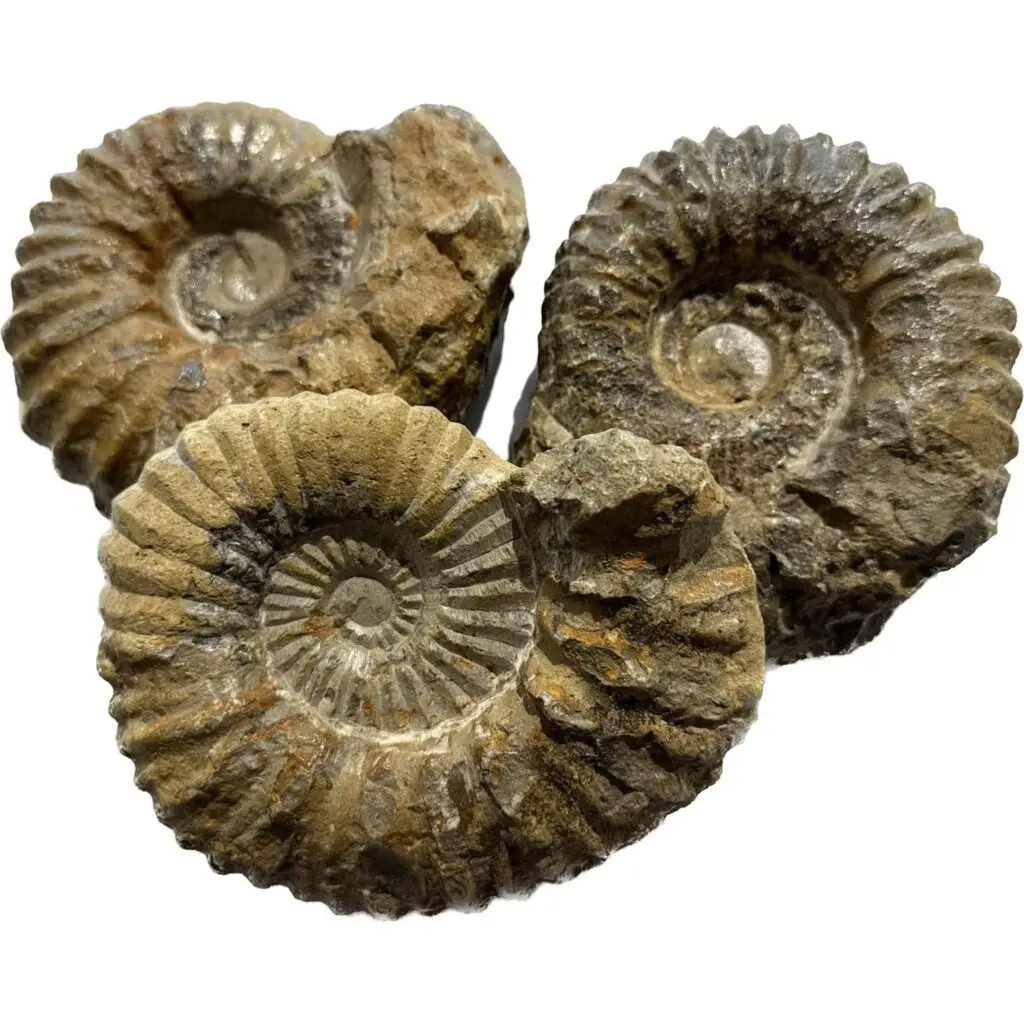Mystical Purple: Discovering Amethyst
Amethyst is a striking and widely adored variety of quartz that is renowned for its vivid purple hue. This gemstone has captivated human imagination for centuries, being used in everything from jewelry to decorative arts. Brazil and Uruguay are among the most significant sources of amethyst, each contributing uniquely to the gemstone’s market. This article will delve into the fascinating aspects of amethyst, including its geological formation, discovery, mining, and the distinctive characteristics of the crystals found in these two countries.
Amethyst is a type of quartz, chemically known as silicon dioxide (SiO2). The formation of amethyst involves a complex geological process that occurs deep within the Earth’s crust. The purple color of amethyst is primarily due to the presence of iron impurities within the quartz crystal lattice. When these iron impurities are exposed to natural radiation over millions of years, they undergo a transformation that gives amethyst its distinctive color.
Amethyst typically forms in geodes, which are hollow, spherical rocks lined with crystals. These geodes form in volcanic rock when gas bubbles become trapped in lava. Over time, these bubbles are filled with mineral-rich solutions that eventually crystallize, forming the beautiful amethyst crystals that we see today. The slow cooling process of these mineral-rich solutions is crucial for the development of well-formed crystals.
Amethyst in Brazil
Brazil is one of the largest producers of amethyst in the world. The country’s amethyst deposits are primarily located in the southern states of Rio Grande do Sul and Minas Gerais.
The amethyst deposits in Brazil are found in volcanic rock formations, particularly within basalt flows. These formations date back to the Cretaceous period, around 145 to 66 million years ago. The volcanic activity during this period created ideal conditions for the formation of geodes. The discovery of amethyst in Brazil can be traced back to the 19th century. Initially, these gemstones were found by local farmers who stumbled upon them while tilling their fields. Today, modern mining techniques are employed to extract amethyst from the earth. The process involves drilling into the volcanic rock to locate geodes, which are then carefully extracted to prevent damage to the crystals inside.
Brazilian amethyst is known for its deep purple color, which can range from light lavender to a rich, dark hue. The crystals are often large and well-formed, making them highly sought after for both gemstone cutting and specimen collecting. The geodes from Brazil can vary in size, with some being small enough to hold in one’s hand, while others can be several feet in diameter.
Amethyst in Uruguay
Uruguay is another prominent source of high-quality amethyst. The deposits in this country are located primarily in the Artigas Department, near the border with Brazil. Similar to Brazil, the amethyst deposits in Uruguay are found in volcanic rock formations. The basalt flows in this region also date back to the Cretaceous period. The unique geological conditions in Uruguay have resulted in the formation of some of the most stunning amethyst geodes in the world.
The discovery of amethyst in Uruguay occurred in the early 20th century. Local farmers and prospectors initially found the geodes, which led to a small-scale mining industry. Today, amethyst mining in Uruguay is more organized, with several mines operating in the Artigas region. The extraction process involves the use of drills and explosives to access the geodes, which are then carefully extracted and transported for further processing. Uruguayan amethyst is renowned for its exceptional clarity and deep, vibrant purple color. The crystals are often smaller than those found in Brazil, but they exhibit a rich saturation that makes them highly prized. The geodes from Uruguay are typically lined with dense clusters of crystals, creating a dazzling display of color and light.
The Crystals of Amethyst
The crystals of amethyst are a key factor in its appeal. These crystals can vary widely in size, shape, and color, depending on the specific conditions under which they formed.

Amethyst crystals typically form in a six-sided prism shape, ending in a point. The crystals can range from tiny, needle-like formations to large, well-defined prisms. The arrangement of the crystals within a geode can create stunning patterns, with some geodes featuring a central cluster of large crystals surrounded by smaller ones. The color of amethyst crystals can range from pale lavender to deep violet. The most valuable amethyst crystals are those with a rich, saturated purple color, often with red or blue undertones. Color zoning, where different parts of the crystal exhibit different shades of purple, is also common and can add to the beauty and uniqueness of the gemstone.
Inclusions, or impurities within the crystal, can affect the clarity and appearance of amethyst. While some inclusions can detract from the gemstone’s beauty, others can create interesting visual effects. For example, some amethyst crystals contain tiny, needle-like inclusions of other minerals, creating a shimmering effect known as “silk.”
How Amethyst is Found and Extracted
The process of finding and extracting amethyst involves several stages, from initial exploration to the final extraction and processing of the crystals.
The first step in finding amethyst is geological exploration. Geologists study the rock formations and geological history of an area to identify potential sites for amethyst deposits. This often involves mapping and sampling the volcanic rock formations where amethyst geodes are likely to be found. Once a potential site is identified, drilling and sampling are conducted to locate the geodes. This involves drilling into the rock to extract core samples, which are then analyzed for the presence of amethyst crystals. If promising samples are found, further drilling and excavation are carried out to access the geodes.
The extraction of amethyst geodes is a delicate process. Miners use a combination of drilling, blasting, and manual labor to carefully extract the geodes from the surrounding rock. The goal is to remove the geodes with minimal damage to the crystals inside. Once extracted, the geodes are transported to processing facilities for further examination and cutting. At the processing facilities, the geodes are carefully cut open to reveal the amethyst crystals inside. The crystals are then cleaned and sorted based on their quality, size, and color. High-quality crystals are often cut and polished for use in jewelry, while lower-quality specimens may be used for decorative purposes or sold to collectors. Amethyst is a popular gemstone in the jewelry market, valued for its beauty and versatility.

It is used in a wide range of jewelry items, from rings and necklaces to earrings and bracelets. The gemstone’s popularity extends beyond jewelry, with amethyst being used in decorative items, crystal healing practices, and even as a collector’s item.
Amethyst is a favorite among jewelers and consumers alike. Its rich purple color pairs well with various metals, including gold, silver, and platinum. The gemstone is often cut into faceted shapes, such as round, oval, and emerald cuts, to maximize its brilliance and color.
Amethyst geodes and clusters are popular decorative items, prized for their natural beauty. These specimens are often displayed in homes and offices, adding a touch of elegance and natural wonder to any space. In the world of crystal healing, amethyst is believed to have powerful spiritual and healing properties. It is said to promote calmness, clarity, and balance, making it a popular choice for meditation and energy healing practices.
Amethyst is also highly sought after by mineral collectors. The unique characteristics of amethyst crystals, such as their color, clarity, and formation, make them a valuable addition to any mineral collection. Collectors often seek out rare and unusual specimens, such as those with exceptional color zoning or large, well-formed crystals.
The Cultural and Historical Significance of Amethyst
Amethyst has a rich cultural and historical significance that spans across different civilizations and eras. In ancient Greece and Rome, amethyst was believed to ward off intoxication and was often carved into drinking vessels or worn as a protective amulet. The name “amethyst” itself is derived from the Greek word “amethystos,” which means “not intoxicated.” This belief was so strong that it influenced the creation of various legends and myths surrounding the stone.
During the Middle Ages, amethyst was regarded as a symbol of royalty and power. It was used extensively in the ornamentation of religious artifacts and the regalia of kings and bishops. The deep purple color of amethyst was associated with nobility, piety, and spiritual wisdom, making it a popular choice for ecclesiastical jewelry and adornments. This tradition continues today, with amethyst being featured prominently in many crown jewels and ceremonial items.
Amethyst and Its Metaphysical Properties
In addition to its aesthetic appeal, amethyst is revered in the realm of metaphysics and crystal healing. It is believed to possess numerous healing properties that can benefit the mind, body, and spirit. Amethyst is often associated with calmness and clarity, making it a popular choice for those seeking to alleviate stress, anxiety, and negative emotions. Its soothing energy is said to promote restful sleep and enhance meditation practices.

Amethyst is also linked to the third eye and crown chakras, which are associated with intuition, spiritual insight, and higher consciousness. Practitioners of crystal healing often use amethyst to enhance psychic abilities and spiritual growth. It is believed that amethyst can aid in the development of intuition and provide protection against negative energies and psychic attacks. These metaphysical properties make amethyst a favored stone for spiritual seekers and energy healers.
Environmental and Ethical Considerations in Amethyst Mining
As with all forms of mining, the extraction of amethyst raises environmental and ethical concerns. Mining operations can have significant impacts on the surrounding ecosystem, including habitat destruction, soil erosion, and water pollution. In regions like Brazil and Uruguay, where amethyst mining is a major industry, it is essential to balance economic benefits with environmental stewardship.
Many mining companies are now adopting sustainable practices to minimize their environmental footprint. This includes measures such as land reclamation, water management, and the use of environmentally friendly extraction techniques. Ethical sourcing is also becoming increasingly important in the gemstone industry, with a growing demand for transparency and fair labor practices. Consumers are encouraged to seek out ethically sourced amethyst from reputable suppliers who prioritize environmental and social responsibility.
The Science Behind Amethyst’s Color
The captivating color of amethyst is one of its most defining characteristics, and understanding the science behind it adds to its allure. The purple hue of amethyst is primarily due to the presence of iron impurities within the quartz crystal structure. When these iron atoms are subjected to natural radiation from the surrounding rocks, they undergo a process called irradiation. This process causes the iron to change oxidation states, resulting in the purple coloration.
Additionally, the presence of other trace elements, such as aluminum, can influence the color intensity and shade of amethyst. The specific geological conditions, including temperature and pressure, also play a crucial role in the development of the gemstone’s color. This intricate interplay of factors results in the wide range of purple shades seen in amethyst, from light lavender to deep violet, each with its unique beauty and charm.
Amethyst in Modern Jewelry Design
Amethyst continues to be a beloved gemstone in modern jewelry design, admired for its versatility and striking appearance. Jewelry designers often incorporate amethyst into a variety of styles, from classic and elegant to contemporary and avant-garde. The gemstone’s vibrant color makes it an excellent choice for statement pieces, while its affordability compared to other precious stones makes it accessible to a wide audience.
In addition to traditional cuts, such as round and oval, amethyst is often crafted into unique shapes and settings that highlight its natural beauty. Designers experiment with different metals and complementary gemstones to create pieces that showcase the rich purple hue of amethyst. Whether set in a simple pendant or an intricate cocktail ring, amethyst jewelry continues to enchant and inspire, making it a timeless favorite among gemstone enthusiasts and fashion lovers alike.





















